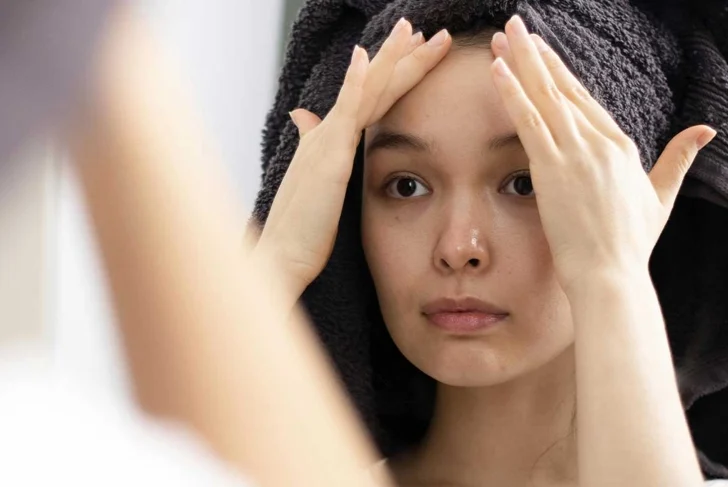Is “Cortisol Face” a Thing? What TikTok Got Right (and Really Wrong) About Stress and Your Skin
Scrolling through TikTok these days feels a bit like stumbling into a pop-up health seminar run by amateur dermatologists and wellness warriors. The latest thing to make you stare nervously at your reflection? So-called “cortisol face”—the idea that stress is subtly (or not so subtly) reshaping your face. Before you start doom-scrolling through your camera roll, let’s break down what this trend actually means—and whether it holds any water.
Cortisol: More Than Just a “Stress Hormone”
First things first—let’s meet the star of this trend: cortisol. Often dubbed the “stress hormone,” cortisol is more like your body’s multi-tool. It plays a central role in metabolism, immune response, blood sugar regulation, and even your sleep-wake cycle. It’s what gets you out of bed in the morning and helps you respond to real threats.
Cortisol isn’t bad. In fact, it’s essential. The problem starts when it shows up in overdrive—staying elevated for long periods thanks to chronic stress. Think of it like caffeine: great in moderation, jittery chaos in excess.
“Cortisol Face”: What’s the Deal?
Here’s where things get fuzzy. According to TikTok, you might be able to “see” your stress by the puffiness or roundness of your face—dubbed cortisol face. But is that scientifically accurate? Not really.

Sure, high levels of cortisol can affect your appearance over time. But it’s not the immediate, dramatic transformation that some videos suggest. The reality is far less viral-worthy. Morning puffiness, for example, is usually due to things like:
- How you slept
- Hydration levels
- Last night’s salty snack
- Seasonal allergies
- Hormonal fluctuations
Blaming cortisol for a little under-eye puff is like blaming a full moon for your inbox being messy—technically possible, but extremely unlikely.
The Real (and Rare) Medical Condition Behind the Trend
The grain of truth behind this trend? A condition called Cushing’s syndrome. This is a rare disorder where the body produces too much cortisol for an extended period—usually due to tumors or overuse of corticosteroid medications. One of the hallmark symptoms is facial roundness, often referred to as a “moon face.”
But Cushing’s syndrome affects only about 40 to 70 people per million. So, unless you’ve been diagnosed with it, what you’re seeing in the mirror probably isn’t cortisol face—it’s just life.
Why We’re So Obsessed with This Trend
It’s easy to see why cortisol face took off online. For one, it provides a “scientific” explanation for why you might not feel your best in photos or video calls. And in today’s high-stress, high-visibility world, we’re always looking for reasons—and remedies—for any perceived flaw.
Add in the promise of a quick fix (usually sold in the comments), and you’ve got the perfect storm: relatable anxiety + medical buzzwords + a shiny product to save the day. It’s not so much about cortisol as it is about how we process stress and appearance in the age of social media.
So… Can You Actually Lower Cortisol?
Even if cortisol isn’t dramatically altering your appearance, managing it is still a good idea for your health, energy, and overall well-being. Here are some real, proven ways to keep your cortisol levels in check—no sketchy supplements required.

1. Prioritize Quality Sleep
Cortisol naturally dips at night and rises in the morning, but this rhythm only works if you’re getting enough rest. Aim for 7–9 hours of consistent, high-quality sleep. A calming nighttime routine and limiting screen time before bed can help reset your body’s natural rhythm.
2. Move Your Body—Gently and Often
Exercise is one of the most powerful (and free!) stress relievers out there. You don’t need to train for a marathon. A 20-minute walk, yoga, dancing in your kitchen—whatever gets your body moving—can lower cortisol and boost feel-good endorphins.
3. Eat for Balance, Not Burnout
What you eat influences your stress levels more than you might think. Certain foods can help regulate cortisol, like:
- Dark chocolate
- Fatty fish (salmon, mackerel)
- Leafy greens
- Avocados
- Whole grains
Consider leaning into a Mediterranean-style diet full of anti-inflammatory foods, and cutting back on processed sugar and caffeine, which can exacerbate stress.
4. Practice Mindfulness (Your Cortisol Will Thank You)
Mindfulness isn’t just a wellness buzzword—it’s a scientifically backed way to reduce stress. Just five minutes of deep breathing or guided meditation can lower cortisol levels. Apps like Calm or Headspace, or even a mindful walk around your neighborhood, can be grounding tools when you feel stress creeping in.
The Real Takeaway
Is cortisol face a thing? Technically—yes, in rare medical circumstances. But the everyday puffiness or facial changes we see in the mirror are usually the result of sleep, hydration, and lifestyle—not an endocrine emergency.
So the next time TikTok tells you your cheeks are betraying your inner turmoil, take a deep breath and remember: stress is real, but not everything on the internet is. Focus on what actually supports your body—rest, movement, nutritious food, and mindfulness—and skip the mirror anxiety.
Because the truth is, your face isn’t the problem. The pressure to be perfect? That’s what really needs a timeout.

